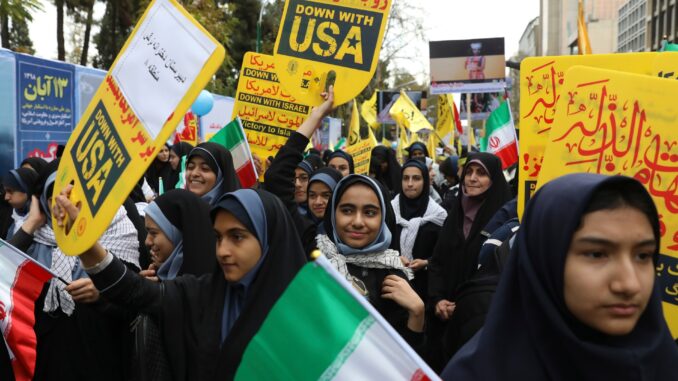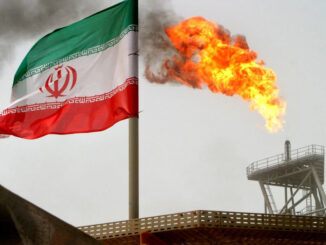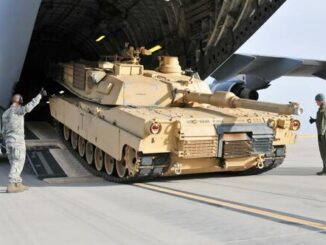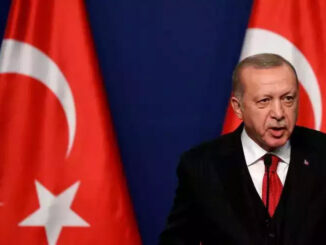
Iran and the United States have a checkered political history going back decades.
Iran has long accused the US of meddling in its internal affairs. In 1953, the US intelligence agency the CIA, with help from the United Kingdom, backed a coup that ousted Iran’s first democratically-elected Prime Minister Mohammad Mossadegh after he tried to nationalise the country’s oil industry.
The coup brought back to power a Western-backed monarch, Shah Mohammad Reza Pahlavi, and for a time the US and Iran were Cold War allies.
In 1957, the two countries signed a cooperation agreement for the civilian use of nuclear power, part of then-US President Dwight D Eisenhower’s “Atoms for Peace” programme. A decade later, the US provided Iran with a nuclear reactor and uranium to fuel it. The nuclear collaboration would continue for another 12 years.
In 1972, then-US President Richard Nixon visited the capital, Tehran. But while relations between the US government and Iran’s rulers flourished, ordinary Iranians suffered under a corrupt elite and increasingly dictatorial ruler.
The resulting civil unrest led to the 1979 Islamic Revolution in Iran. Pahlavi was overthrown and eventually took refuge in the US. The revolution’s leader, Ayatollah Ruhollah Khomeini, formed a new republic and turned the country’s focus away from the West.
Later that year, Iranian students supporting the revolution overran the US Embassy in Tehran, taking 52 Americans hostage and holding them for 444 days.
In April 1980, the US cut off diplomatic ties with Iran.
It also backed Iraq in the 1980-1988 Iran-Iraq war that killed hundreds of thousands on both sides.
When an attack on a multinational military base in Beirut, Lebanon killed 241 US service members in 1983, the US blamed Hezbollah, a Lebanese Shia party backed by Iran.
The following year, the US added Iran to its “State Sponsors of Terrorism” list.
In 1988, the US Navy shot down an Iranian civilian plane. All 290 people onboard were killed.
In the early 1990s, the US escalated sanctions against Iran, seeking to keep it from getting advanced weaponry.
A brief thaw in ties occurred in 1998, when then-US Secretary of State Madeleine Albright met with Iran’s deputy foreign minister and other diplomats at the United Nations in the highest-level encounter since 1979, though there were no direct talks.
In 2002, following the September 11 attacks on New York City and Washington, DC, then-US President George W Bush described Iran as being part of the “Axis of Evil” – alongside North Korea and Iraq.
When it emerged that Iran was developing its nuclear programme in the early 2000s, Washington led efforts to have the international community impose sanctions, despite Tehran maintaining it was not seeking a nuclear weapon.
Then US-President Barack Obama agreed to talks with Iran with other nations present, paving the way for the 2015 nuclear deal that would limit Iran’s nuclear activities in exchange for an easing of sanctions.
Under President Donald Trump, the US unilaterally withdrew from the deal in 2018, restoring sanctions against Iran. Iran began producing enriched uranium, beyond the limits the deal had imposed.
In January 2020, tensions were further heightened when the US killed Iranian General Qassem Soleimani, the head of Iran’s Islamic Revolutionary Guard Corps’ (IRGC’s) Quds Force, in a drone strike in Baghdad, Iraq.
In 2021, US President Joe Biden promised to revive the nuclear deal with Iran, but after several rounds of talks, the deal remains in jeopardy.
More recently, the US has accused Iran of supplying Russia with drones in its war with Ukraine.
Earlier this month, the US sanctioned Iranian officials, accusing them of complicity in human rights violations in the wake of widespread protests sparked by the death in police custody of 22-year-old Mahsa Amini, an Iranian woman detained by the country’s morality police in September.






